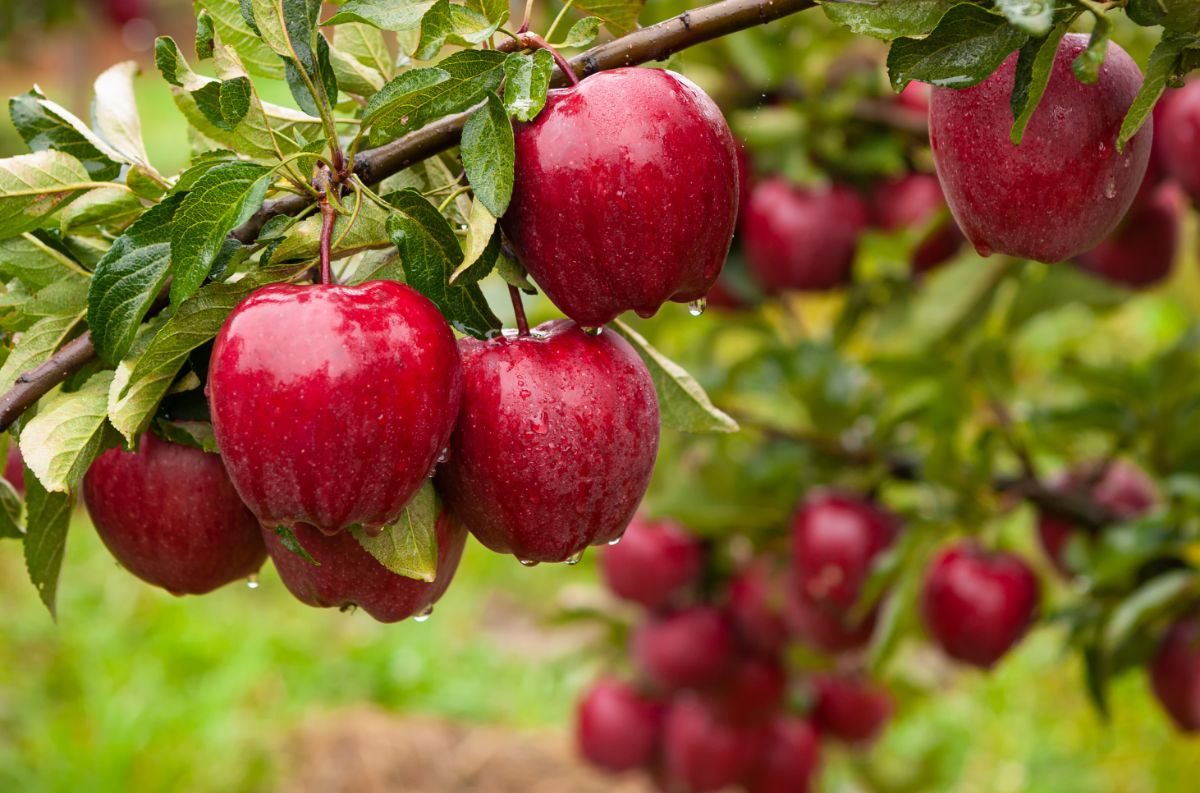
Spring is the time for starting seeds, cleaning the garage, and picking out new patio furniture cushions. It is also the time to plant new fruit trees.
Garden centers and nurseries are awash with containerized stock, begging to be crammed in the car and brought home.
With so many orchard hopefuls dreaming of fresh apples and peaches, preserves and pies, too often new trees are brought home and plunked unceremoniously in a bare spot in the yard and then forgotten. Too often, our little fruit trees underperform or flat-out die.
Follow these tips this spring for a healthier tree and a better crop of fruit in the future.
Jump to:
- Pick the Right Tree for the Location
- Plant at the Correct Depth
- Don’t Bother With Soil Amendments.
- Keep the Roots Wet
- Avoid Big Air Pockets When Planting
- Don’t Forget to Water Often
- Stake It
- Prune If Needed
- Mulch Your New Fruit Tree
- Keep the Critters Away
- Space Them Out
- Plant a Friend for Your Tree: Pollination Needs
Pick the Right Tree for the Location
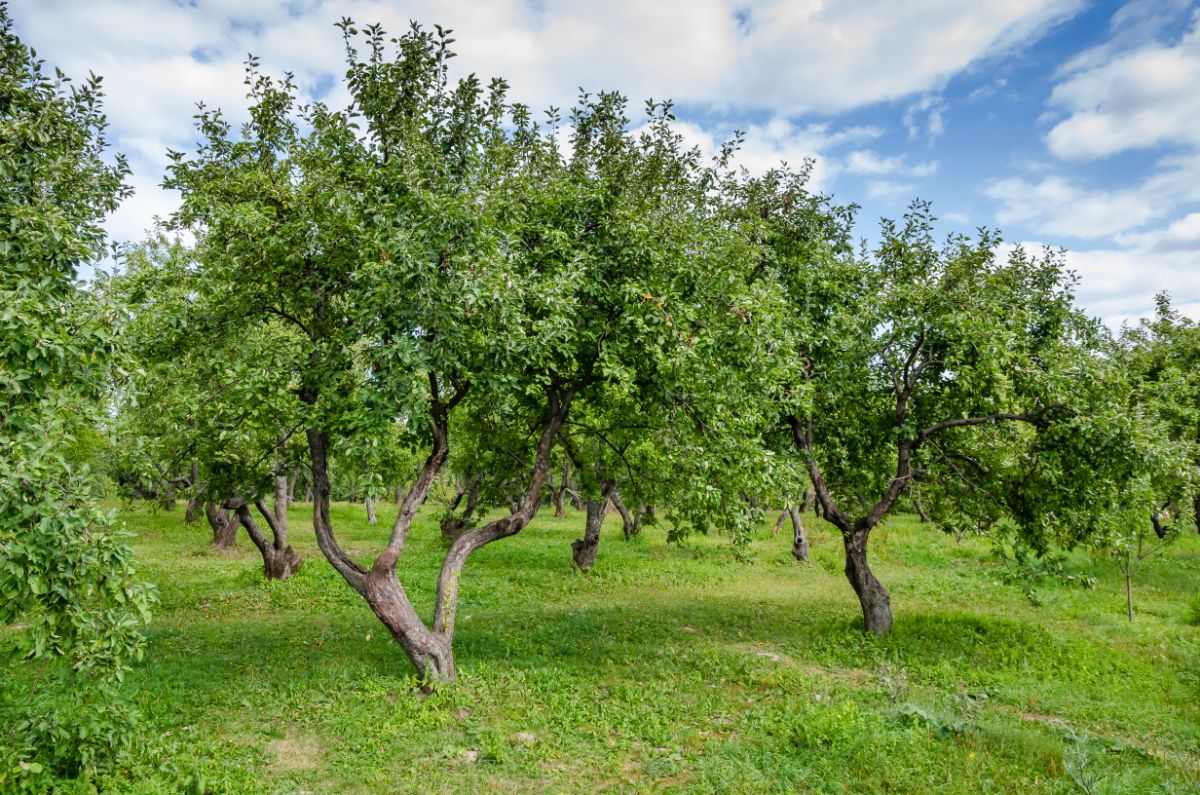
Not all sites are suitable for every fruit tree. Just because it was available from the big box store does not mean it is a good choice for your location. Often, all the stores in a wide geographical area receive the same inventory of trees. Look for quality trees from a reputable vendor. Consider the following factors:
- Hardiness: is the tree cold-hardy for your location?
- If you purchase from a brick-and-mortar store, the tag on the tree should have information about what USDA Plant Hardiness zones the tree is suitable for. The same is available from an online vendor’s website.
- If you select a zone 4 tree and you are in zone 4, consider if your location is warmer or colder than the average for the area. Microclimates can exist near lakes, on ridges, or at the bottom of drainages.
- Look at what time the fruit will ripen. It may be an issue if the fruit is not ripe until early October, but your first frost occurs in mid-September.
- Disease: some trees act as a host for diseases that affect other species.
- Cedar rust of apple trees is a good example. The rust needs a host in the Cupressaceae family to complete its life cycle, usually an eastern red cedar or juniper. If there are a bunch of junipers around the foundation of your neighbor’s house, an apple tree might not be a good choice for your yard.
- Local factors can also be of concern. I lived near the coast and could not keep a peach tree alive despite my efforts and multiple attempts. Finally, I learned nobody in the area could either due to a fungal disease prevalent in our part of the county caused by the high humidity.
- Ask around. Look at healthy local fruit trees and ask the owner what variety they are.
- Size: fruit trees come in several “sizes” that they will attain at maturity. Buying a large tree when you only have a small backyard can cause a problem. Or, you may not want to deal with processing and preserving 8 bushels of apples per tree.
Many varieties of fruit trees are available in at least two sizes, determined by the rootstock the young tree is grafted to.
- Dwarf: the smallest of the fruit trees, most dwarf trees will be 8-10’ tall at maturity and as wide as they are tall. The soonest to bear fruit, a dwarf fruit tree will often start to yield fruit at 2-4 years of age. They are not as long-lived and sometimes not as cold hardy as trees grown on standard-sized rootstock.
- Semi-dwarf: the middle-sized trees, most will be 12-15 feet tall and wide at maturity. They take a bit longer to fruit but will yield more than a dwarf tree.
- Standard: this is the regular old-fashioned fruit tree. If you remember climbing an apple tree as a kid, it was probably a standard. The farm I grew up on had an orchard of 80-year-old standard apple trees. They were huge–30 feet tall and sometimes forty feet wide. We drowned in apples. Standards can take 5-7 years to begin bearing fruit.
Plant at the Correct Depth
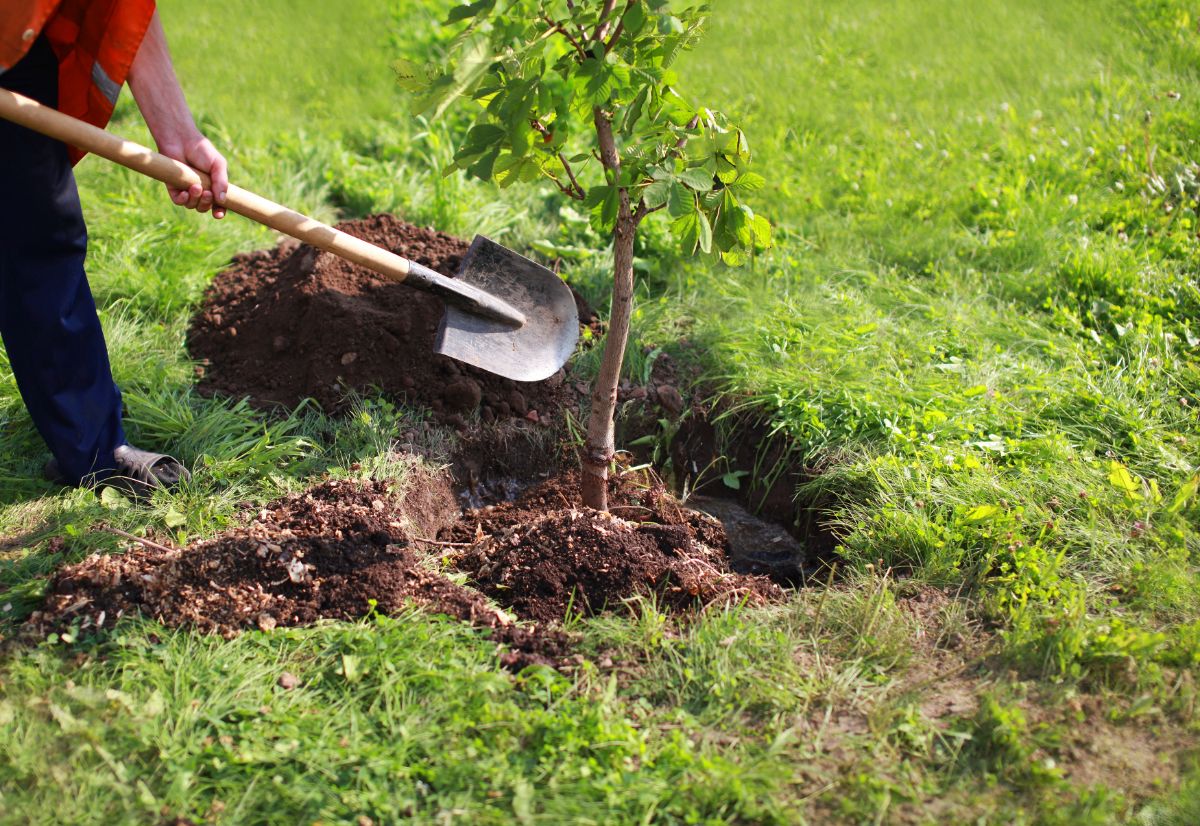
Many young trees, especially bare-root trees, are planted too deeply. Almost all fruit trees that you can buy are grafted. With a containerized tree, this graft should be visible a couple of inches above the soil in the pot. When grabbing your shovel, aim to dig a shallow bowl shape, not a coffee can.
- Dig the hole deep enough that the roots are not folded over; they need room to spread out.
- Make a cone-shaped mound of soil at the center of the hole to set the tree on, and let the longer roots splay out down the sides of the cone if needed.
- The graft should be 2-3 inches above the ground level when the soil is returned to the hole.
- Dig the hole 2-3 times as wide as the container or natural root spread for a bare-root tree.
- Generally, the hole should be no deeper than the root ball. You want the root swell at the tree’s base to be just slightly above the soil level when you are finished planting.
Don’t Bother With Soil Amendments.
In general, the soil should not be altered very much when planting a fruit tree, or any tree for that matter. It will not take that young tree long for its roots to extend beyond the hole you dug, so any improvement to the soil will have a short-term benefit.
Ideally, the tree will survive and learn to thrive in the soil it is planted in. If you have heavy clay soil, adding compost and mixing it with the native soil can help prevent soil compaction while the new tree is young and fragile.
Do not add fertilizer to the hole, as this can burn the young tree’s roots.
Keep the Roots Wet
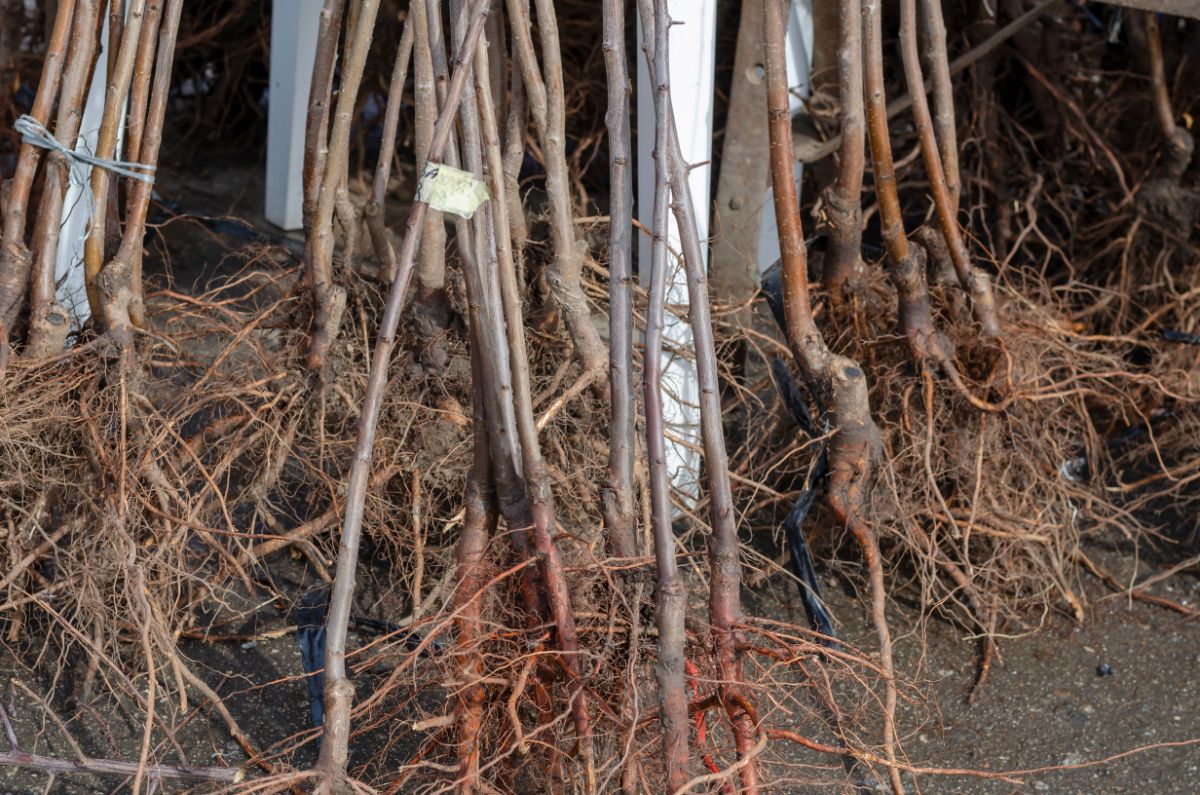
Bareroot trees are less expensive and usually come in more varieties than containerized stock. They are an excellent choice for establishing a home orchard, be it two trees or twenty. Even fruit trees in containers can be dry if they sit next to your garage for a few days before planting.
- Don’t let the roots of your new tree dry out before planting.
- If bare-root, keep it in a cool, dark place, preferably in the original packaging. Wrap the roots in wet towels or newspapers to keep them damp if needed.
- If in a container, keep it out of direct sunlight and water it frequently.
- Soak the roots of bare-root fruit trees in a bucket of water for at least 2 hours before planting, but no longer than 24.
Avoid Big Air Pockets When Planting
Soil naturally has tiny air pockets, which are necessary for the respiration of plant roots. These air pockets are small, like the holes in a sponge.
Big voids around the roots allow them to dry out and keep the roots from absorbing water and nutrients.
Firmly tamp the soil around your new fruit tree as you backfill the hole, tucking soil around all of the roots and preventing large voids from forming.
Don’t smash it down. Just firm pressure is sufficient.
Don’t Forget to Water Often
Everyone remembers to water their new tree when they plant it. But your new tree needs a bit of help for a while after that. Newly planted fruit trees need regular watering.
Unless your weather has been rainy, your new fruit tree needs to be watered often as it starts its life in your yard. Check the soil at the base of the tree to be sure. In general, water:
- Daily for the first 1-2 weeks after planting.
- Every 2-3 days for the next 2-3 months.
- After three months, water during dry spells until the tree is well-established.
Stake It
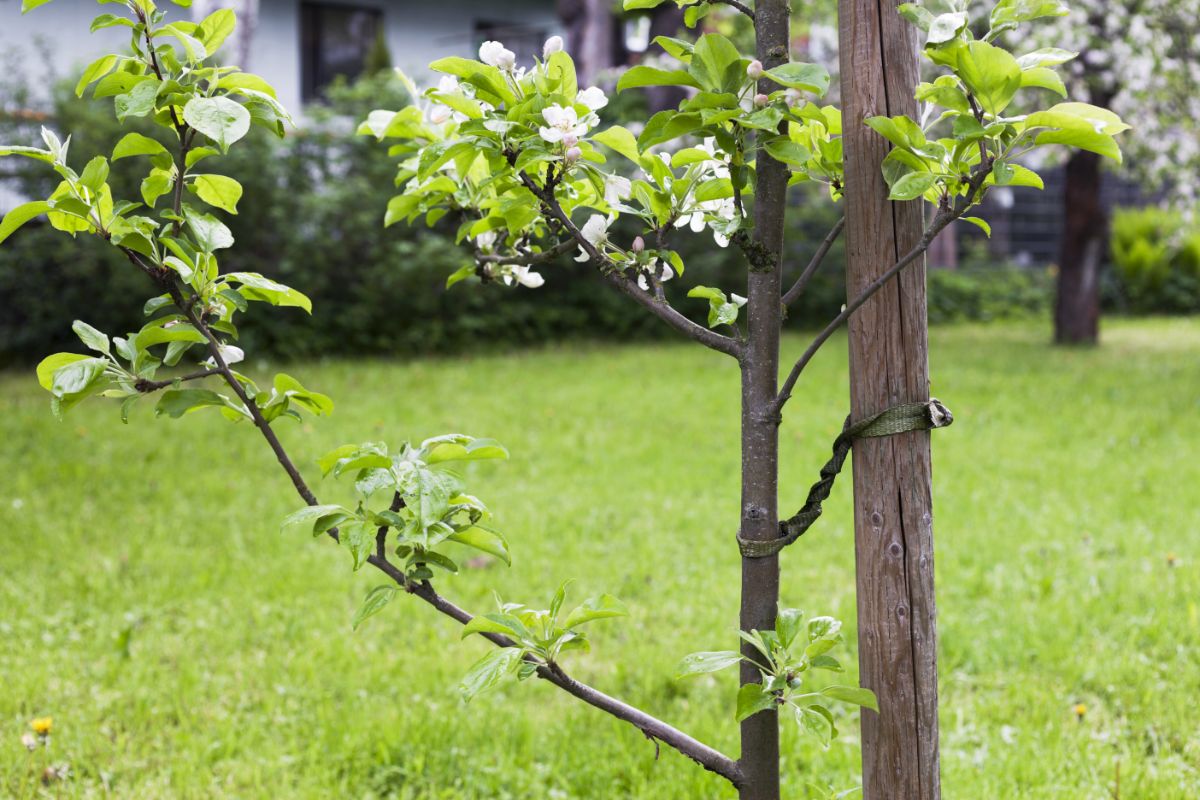
There is some argument about staking trees, but a new fruit tree should generally have a stake, especially a dwarf tree. Staking is only partially about keeping the tree vertical.
Staking your fruit tree when it is planted keeps the root ball immobilized, so all the new fragile roots are not broken by the tree waving around or tipping over.
- Place the stake about a foot from the tree at the time of planting or soon after. Don’t push the stake through the root ball; it could damage the roots.
- Use a flexible, non-abrasive material to attach the stake to the tree. Please, no wire or rope!
- The stake can be removed when the young tree is established.
Prune If Needed
Many people wonder if they need to cut back or prune their new fruit tree when they plant it. The answer is, of course, it depends.
Trees that are dug up and shipped bare-root have lost much of their root mass and need to be pruned to have the top match the bottom. However, this is usually done by the vendor before shipping.
Bare-root trees often arrive looking like a stick with roots, in which case no further pruning is necessary.
Containerized trees may benefit from pruning to correct form defects and remove any broken or dead branches.
Mulch Your New Fruit Tree
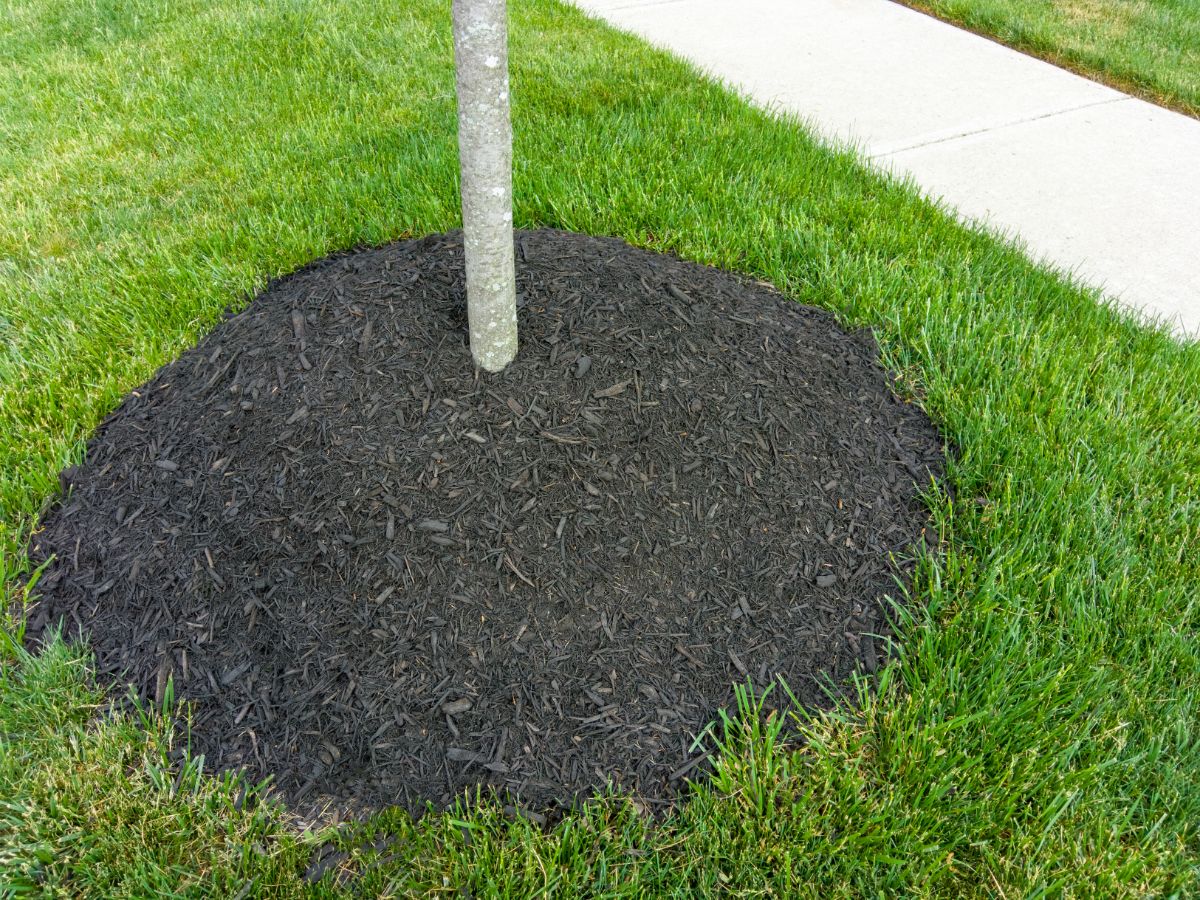
Mulching around a newly planted tree is essential, one of the easiest things to do, and one of the most commonly screwed up.
A proper mulch ring around the new tree reduces competition from grass, helps even out moisture swings, and maybe the most important benefit: keeps the lawnmower or weed eater away from the tender trunk of your new tree.
- Create a mulch ‘donut’ around the tree, as wide as the drip line (how far the branches go out) or about three feet from the tree’s base if it doesn’t have many branches.
- Don’t let the mulch touch the trunk of the tree. Doing so can encourage rot. Keep mulch two inches or more from the trunk.
- 2-4 inches thick is sufficient to reap the benefits. Don’t pile it on like a volcano.
- Use any organic mulch material: wood chips, grass clippings, raked leaves, straw, etc. Reapply as necessary.
Keep the Critters Away
Rabbits are everywhere. Many people have to contend with deer. Your pet goat is not your new plum tree’s friend.
Animal damage can range from stripped bark, munched leaves and twigs, to completely broken or uprooted trees.
One autumn, a young male white-tailed deer had an irresistible urge to rub his antlers up and down the peach tree my mother had nursed along for years.
The buck destroyed that tree. All that was left was a branchless stick rubbed bare, torn branches laying all over the scene of the crime. My mother sat out in the orchard for several nights, waiting to get her revenge.
Many commercial wrappings are available to guard against gnawing rabbit and rodent teeth. I have to install a six-foot diameter, five-foot-tall fence around my young apple trees, or they become deer food.
Protect your investment in time, labor, and money.
Space Them Out
It is easy to plant new trees too closely together. When we buy them, they are small. But remember, that semi-dwarf cherry tree will not always be four feet tall and one foot wide. Those dwarf apples you planted five feet apart will be ten feet wide each and fight with each other for space.
If planting more than one tree, consider the space they will need when they mature, not the space they occupy now.
If planting only one tree, space it correctly from powerlines, buildings, fences, and other obstacles. You don’t want all your apples falling on your neighbor’s side of the property line.
Plant a Friend for Your Tree: Pollination Needs
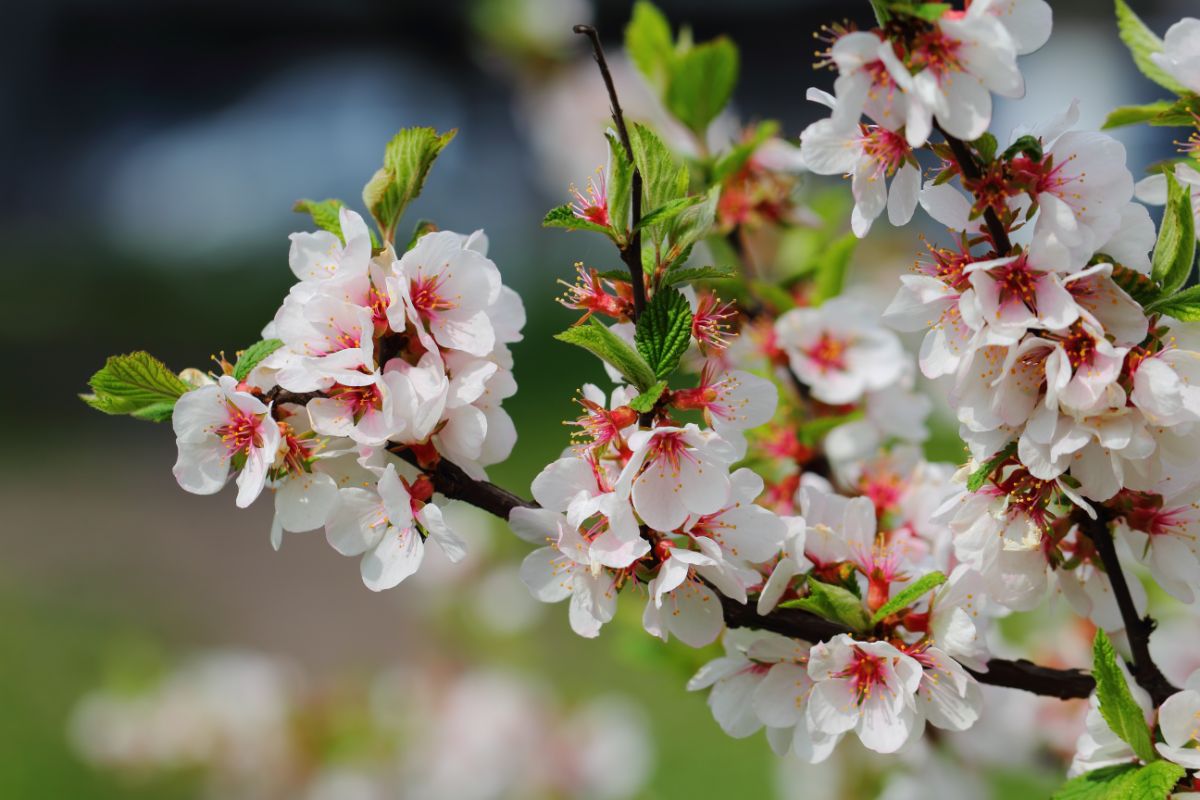
Most fruit trees need a cross-pollinator buddy. Some fruit trees are self-fruitful, but even those varieties will yield a heavier crop if a cross-pollinator is nearby.
Apple trees, for example, need an apple tree of another cultivar planted nearby to set fruit. If you plant two ‘Honeycrisp’ apple trees, they will not pollinate each other, and you will depend upon your neighbor to help out.
Some peaches, nectarines, and apricots are self-fruitful. They usually do not require cross-pollination.
Selecting another cultivar to be the cross-pollinator requires the trees to flower at or near the same time. Reputable vendors can usually provide information on their trees’ blooming category–early, midseason, or late. Mixing an early bloomer with a late-season bloomer will not yield satisfactory results.
Check this quick reference from the University of Maryland Extension to determine which fruit trees need a cross-pollinator and which are self-fruitful.
Paying attention to these tips will help your new fruit tree survive and grow and yield a healthier tree, a more functional planting area, and a better fruit crop.

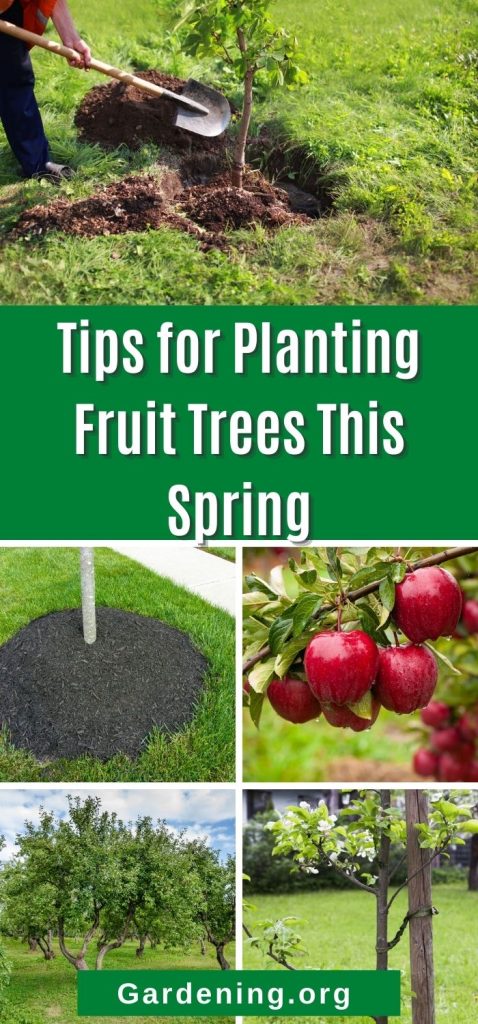
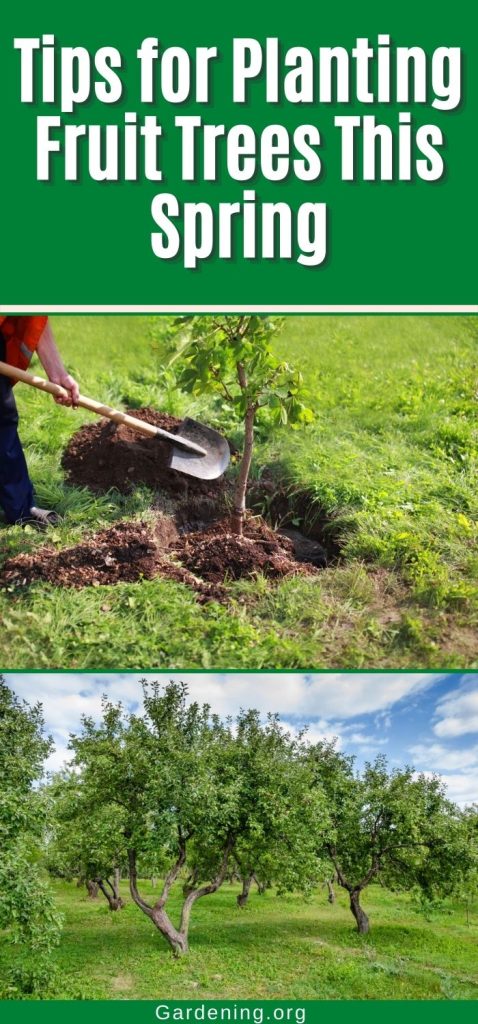
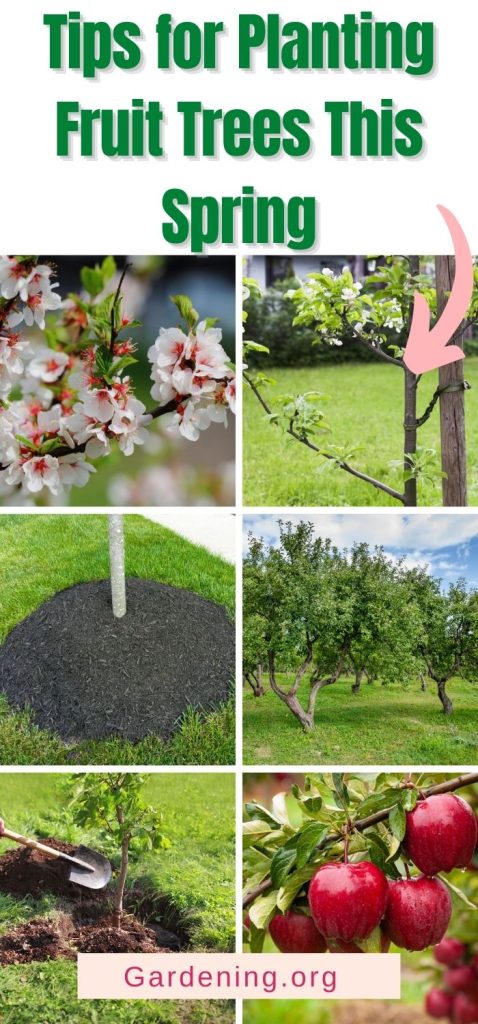
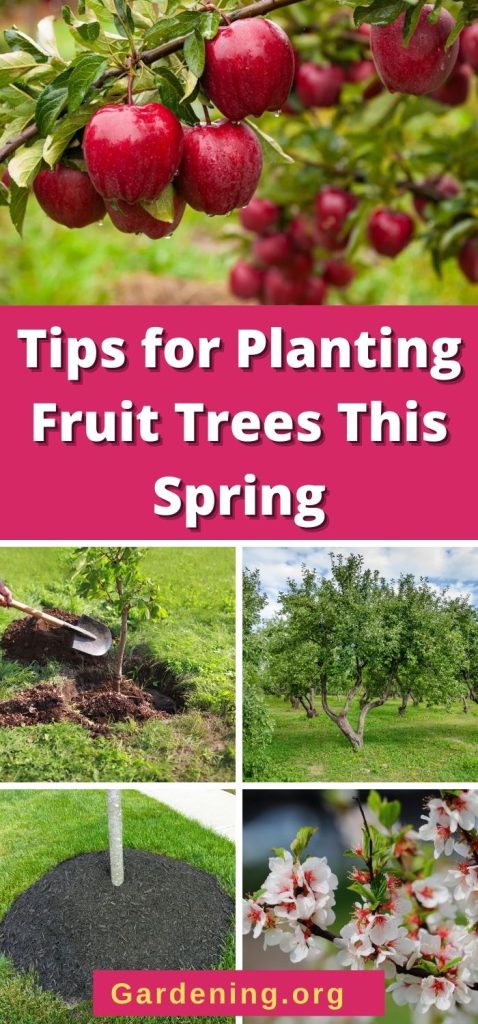
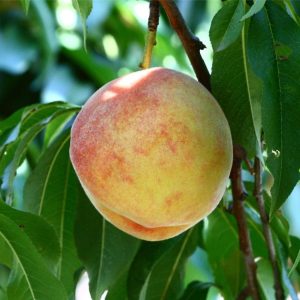
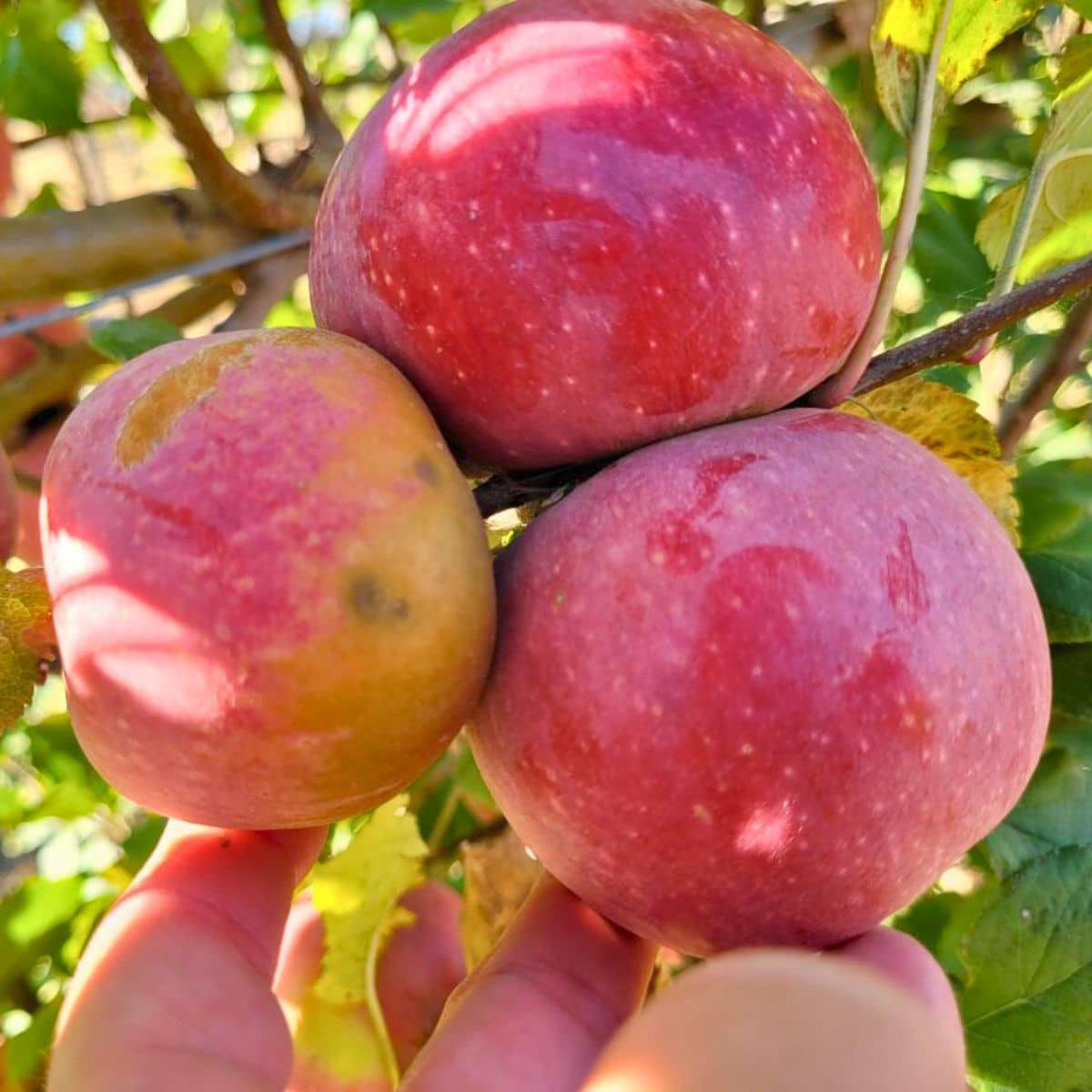
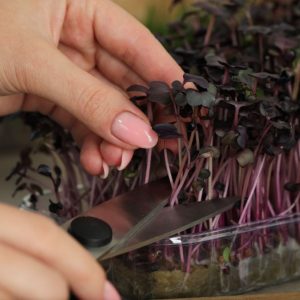
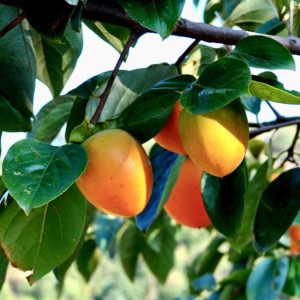
Helen
I need help please. All my fruit trees have little worms my cherry have them by the seeds. Every year. I can't eat any of them. Except my pears!!!#